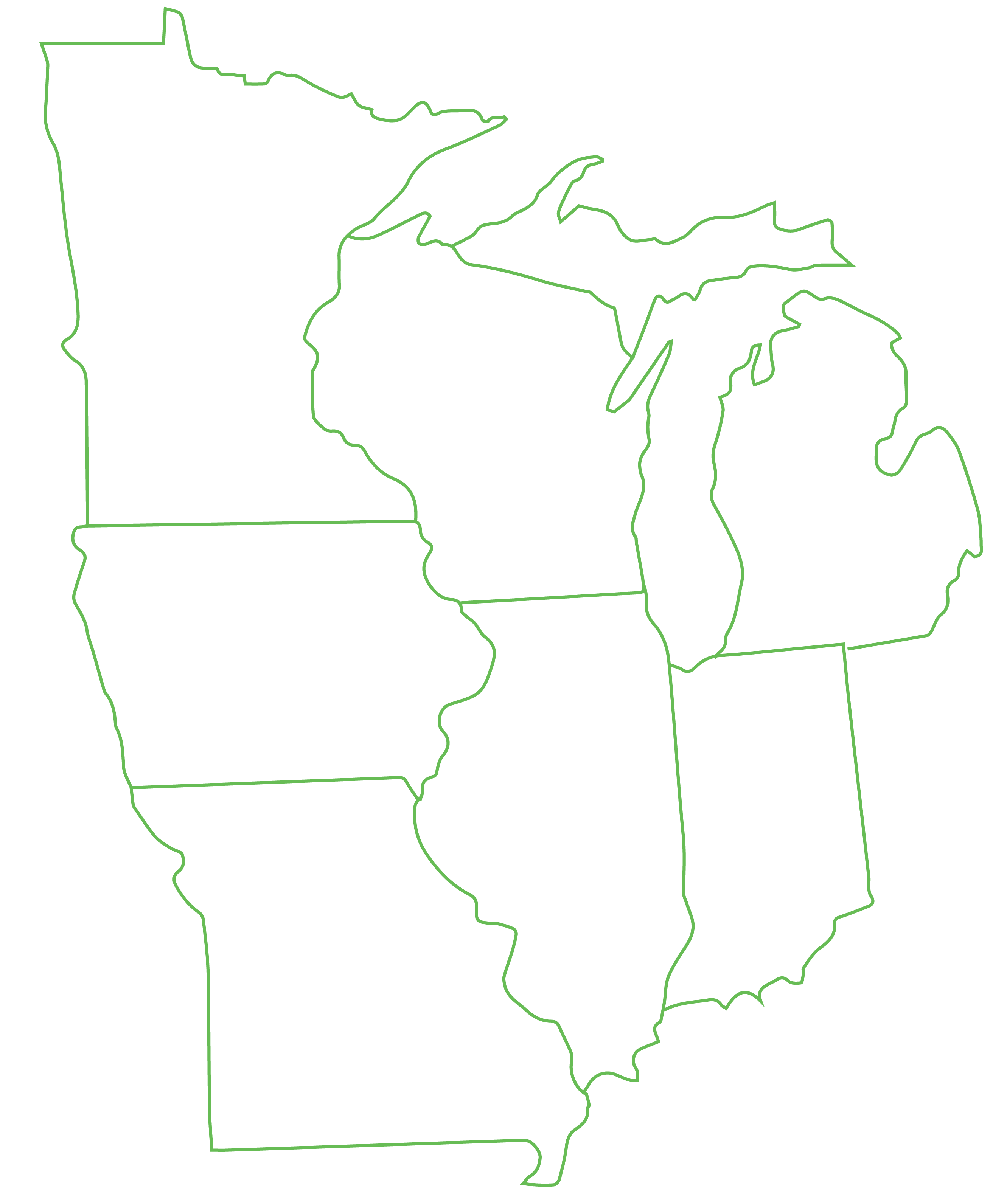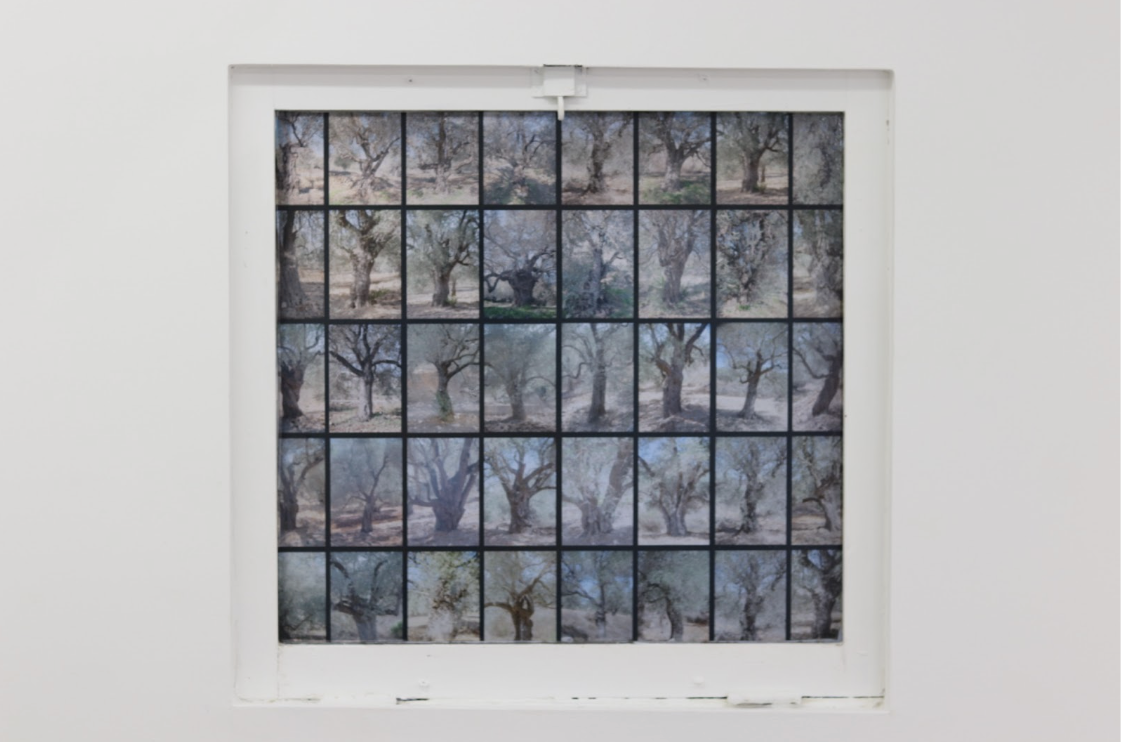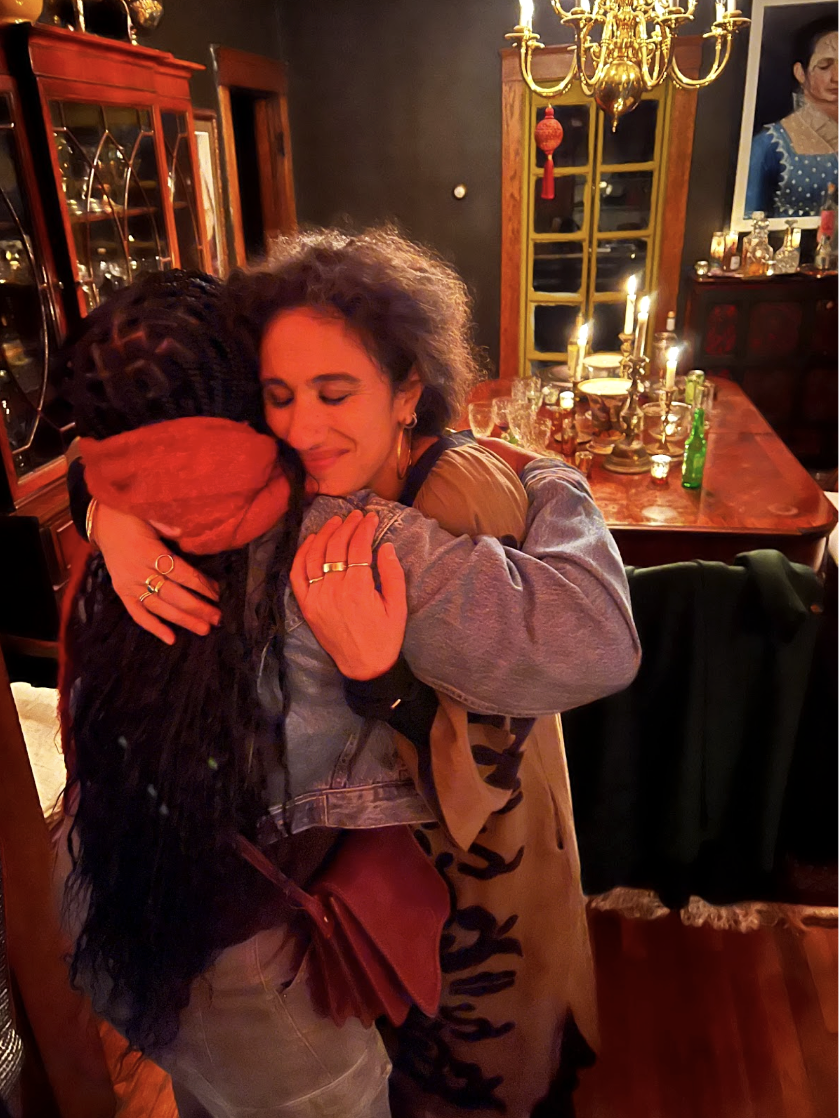Attokháhtshera (Responsiveness)
Written December 13, 2024
This is the day that Lorraine O’Grady died. Her ability to language cracked open worlds for me—the potentiating energies that can cut through to what is possible. Two days ago, Nikki Giovanni died. Judith Jamison’s celebration of life was yesterday. Avengers Assemble. At the end of last year, it was clear that “business as usual” was not the work—to create new conditions and invite the unknown to the table was the right thing to do. I gathered a work group of five people to discuss pausing our open calls and exhibitions and offering our space and resources at ATNSC to Palestinian contemporary artists and cultural workers, given an environment that began and continues to cancel exhibitions. Culture bearers threaten the colonial project. If art is life, then no art. We co-created a letter of invitation—very simple, and sent it out via email and through Instagram. An artist called, “Is this real?” “Yes.” We made new friends—no work, just deepening relations and care. Grief, bearing witness, laughter, political snarkiness, taking the other in. This is what we know. This is what is happening. A solidarity that is rooted in our lands—not a defiant friendship in opposition to an overculture. The white pine, a marker of peace on Turtle Island, a violence when it is planted in some other. Amos couldn’t do the exhibition in 2023. We agreed on the following summer. He mentions a desire to one day do a huge exhibition with the trans flag colors. I said, why wait? Let us practice now. We received voices from all over the Americas—trans, black, brown, niizh manidoowag. He printed the work. Told us stories of his connections to Cleveland. The birth of his son. The roots of his practice. We hosted him. Others came to connect. The healer came with needles. More laughter. Others learn they cannot hold what’s human scale—the weight of intimacies. We reject exhibition openings and embrace the giveaway. We meet new people and stay interconnected. Jenna arrives and brings everyone with her. She holds the line. She removes obstructions. She stays connected. She connects with others. Zoe follows to mark paper with memory—the faithful hurricane becomes an unexpected tornado. We push through winds and falling branches to home. Shuhrat travels here from the beautiful place that others forget exists. He’s seen your freedom; knows where home is. English, a third language; this is the framework where he can be interpreted—not understood. We don’t know his tongue—a sewn-in vernacular that still requires him to jump the tracks in order to meet others. Pod Pokrovom. The Russians know he is Indigenous. Kwame died by suicide—this, another kind of floating poem (insert it anywhere within this text work). Noah and Marlee come without Brian, but he is with us. We use the material of exile—a crate meant to carry. We build together—we all do our part. We share a meal and learn each other again. Again. Again. Again. A place to sit. A place to share food. Books. Place to perform a poem, dance, sing a song you wrote for a lover. Place to return. They said to do an exhibition. Karl said, “this is something I know I can do.” Shadi is asking me how I am doing while I am thinking about his sister and her children in Beirut. The air. We gather again, these connections we’ve made. The Ibejis. Olive Trees. Checkpoints and the Bethlehem Star. Burlap. Tile. A plane in the Buqaa Valley. Permission to land. The bombs. The babies. The bodies. The press inking the paper with breath. The bodies. The guituzik. Naima’s voice. The kindness that lives in her eyes. She is alive. We are alive. Can this poem be the grant report? How about the incomplete tatreez? Jenna returns. We’ve all missed one another. She takes in what’s the same, what has changed. Kwame died by suicide. So did Owiso. Margaret died. She slept for two days when May died by suicide thirty years ago—it’s the blues in black … AND displacements. Running. Run! The work speaks. Is speaking. The work is felt. Ashley rides in the Sprinter to collect the work—to care for it. So it will be remembered. When none of us are here. The work will speak. The work will speak for itself. The work will be remembered. The boy on the bike in the camp popping a wheelie on the vinyl attached to the backboard on the gallery garage in the ghetto will be remembered. ART IS.
M. Carmen Lane, “Babalú-Ayé (Alter or Heel! & Return Your ‘Self’ To Human)” (2024). Corn, beans, sinew, leather, cotton, limestone, clay, beads, broom, za’atar, water. From exhibition POSSIBILITY FOR REPAIR, on view at Reinberger Gallery (Cleveland, Ohio). Image courtesy of the artist.
In January 2024, ATNSC formed a work group with artists and art workers Allison Hasiba Abdallah, Joe Namy, M. Carmen Lane, Ashley Rowell, and Lucy Zimmerman to discuss and design an intervention that paused all open calls and programming and offered the resources of the artist-run space to Palestinian contemporary artists and cultural workers, in the wake of exhibition cancellations and mutings by cultural institutions, particularly in the Midwest. One outgrowth from this experiment was the group exhibition OF TIME, which included artists İeva Saudargaite Douaihi, Jenna Hamed, Zach Hussein, Tarik Kazaleh, André and Evan Lenox-Samour, Joe Namy, and Jenin Yaseen. In June 2024, the Amos Paul Kennedy, Jr. exhibition PRINTING THE TRUTH (How Trans Is You?) opened at Akhsó Gallery at ATNSC. The commissioned work included 20 quotations from trans people of color across North and South America. A full set of twenty prints was acquired by The Cleveland Museum of Art through the J.H. Wade Trust Fund (2024.84), established in 1920 for the purpose of purchasing works of art to be exhibited in its museum building.
Amos Paul Kennedy, Jr., detail from solo exhibition PRINTING THE TRUTH (How Trans Is You?) (2024).
Letterpress on chipboard. Akhsó Gallery at ATNSC: Center for Healing and Creative Leadership. Image courtesy of ATNSC.
Jenin Yaseen, “Women’s Thobe” (2024).
Tatreez embroidery; framed. Yaseen honors the 3,000 year-old tradition of tatreez; its history of storytelling through tatreez and the practice itself, learned through apprenticeship under Samia Ayyash. From the group exhibition OF TIME at Akhsó Gallery at ATNSC. Image courtesy of ATNSC.
Artist-in-Residence Jenna Hamed during the open house and last day of her summer 2024 residency at ATNSC. Photo Credit: Donald Black, Jr..
Artist-in-Residence and CEC Artslink Fellow Shuhrat Saidov with ATNSC team member Ashley Rowell, reviewing test strips printed by Latitude Chicago of Shuhrat’s photo series Pod Pokrovom (Under The Cover). Image courtesy of ATNSC.
Joe Namy, “Family Trees” (2014-22).
Digital print on vinyl; lightbox portraits of olive trees in different poses, some as old as 2,000 years, taken in the artist’s family village of Deir Mimas near the border of South Lebanon. Image detail from the group exhibition OF TIME, co-curated by Allison Hasiba Abdallah and M. Carmen Lane. Image courtesy of ATNSC.
Zach Hussein, “ شاب المخيم (The boys of the camp)” (2024). Digital print on vinyl, basketball backboard.
Image detail from the group exhibition OF TIME. Image courtesy of ATNSC.
İeva Saudargaite Douaihi “Permission To Land” (2017).
Video work, 16 minutes 45 seconds; short film revisiting the locations of 20 different landing areas existing in Lebanon over the course of a century and poetic narrative, a voice speaks to their journey—looking for a place to land. Image still from group exhibition OF TIME. Image courtesy of ATNSC.
Jenna Hamed, “Pulling the line releases tensions” (2024).
Unraveled woven jute burlap, found tile from a destroyed Palestinian home, 76 frays. Image detail from group exhibition OF TIME. Image courtesy of ATNSC.
André and Evan Lenox-Samour, “Scarecrow (Starry Night Over Gaza)” (2024).
Handmade mother-of-pearl brooches, ink engraving, acrylic backing, stainless steel hardware, dyed denim jacket. Inspired by brooch worn by the artist’s great-grandfather, Miguel Habib Samour. The artists’ ancestral Bethlehemi craft making practice dates back to the fifteenth century. Image detail from exhibition OF TIME. Image courtesy of ATNSC.
Tarik Kazaleh, “The Guituzik” (2023).
Koa wood, African mahogany, cedar face, steel strings. A never-before-made instrument; inspired by the gimbri—part guitar, part buzuq. Image courtesy of ATNSC.
Visiting artist Naima Shalhoub after a benefit performance as part of the group exhibition OF TIME (November 2, 2024). Image courtesy of ATNSC.
Marlee Barnes, architect and designer of Young Projects, taking in her design coming into being. “The Transforming Table,” made out of crate wood, will be activated with visiting artist Chef Sherry Pocknett (Wampanoag). Our two projects spent time building relationship and connections in service of a longer term collaborative project. Image courtesy of ATNSC.
M. Carmen Lane, “Original Instructions” (detail) (2021).
Digital print on Japanese kozo. From 2024 MdW Summit Exhibition, curated by Brandon Alvendia and Kimi Kitada. Image courtesy of the artist.
ATNSC: Center for Healing and Creative Leadership. Interior residency space. Image courtesy of ATNSC.
















